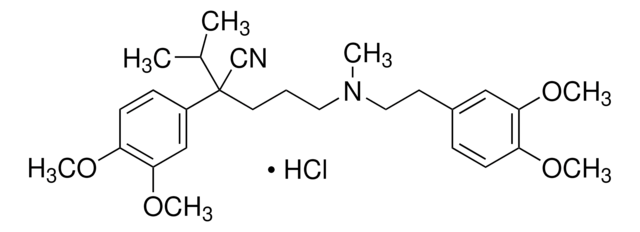おすすめの製品
グレード
pharmaceutical primary standard
APIファミリー
nicotine
メーカー/製品名
EDQM
アプリケーション
pharmaceutical (small molecule)
フォーマット
neat
保管温度
−20°C
SMILES記法
CN1CCC[C@H]1C2=CC=CN=C2.C
InChI
1S/C10H14N2.CH4/c1-12-7-3-5-10(12)9-4-2-6-11-8-9;/h2,4,6,8,10H,3,5,7H2,1H3;1H4/t10-;/m0./s1
InChI Key
RYYKFQGHMYGLEL-PPHPATTJSA-N
類似した製品をお探しですか? 訪問 製品比較ガイド
詳細
この製品は薬局方標準品です。発行元の薬局方により製造・供給されています。MSDSを含む製品情報などの詳しい情報は、発行元の薬局方のウェブサイトよりご確認ください。
アプリケーション
Nicotine for system suitability EP Reference standard, intended for use in laboratory tests only as specifically prescribed in the European Pharmacopoeia.
生物化学的/生理学的作用
ニコチン作動性アセチルコリン受容体アゴニストの原型です。天然に存在する異性体です。
包装
The product is delivered as supplied by the issuing Pharmacopoeia. For the current unit quantity, please visit the EDQM reference substance catalogue.
その他情報
Sales restrictions may apply.
関連製品
製品番号
詳細
価格
シグナルワード
Danger
危険有害性情報
危険有害性の分類
Acute Tox. 2 Inhalation - Acute Tox. 3 Oral - Aquatic Chronic 2 - Eye Irrit. 2 - Repr. 2
保管分類コード
6.1A - Combustible acute toxic Cat. 1 and 2 / very toxic hazardous materials
WGK
WGK 2
引火点(°F)
289.8 °F
引火点(℃)
143.2 °C
適用法令
試験研究用途を考慮した関連法令を主に挙げております。化学物質以外については、一部の情報のみ提供しています。 製品を安全かつ合法的に使用することは、使用者の義務です。最新情報により修正される場合があります。WEBの反映には時間を要することがあるため、適宜SDSをご参照ください。
毒物及び劇物取締法
毒物
Jan Code
Y0001023-1.25MG:
Y0001023-1EA:
Y0001023:
最新バージョンのいずれかを選択してください:
この製品を見ている人はこちらもチェック
Matthew L Banks
Experimental and clinical psychopharmacology, 22(3), 266-273 (2014-02-20)
Preclinical drug discrimination procedures have been useful in understanding the pharmacological mechanisms of the subjective-like effects of abused drugs. Converging lines of evidence from neurochemical and behavioral studies implicate a potential role of nicotinic acetylcholine (nACh) receptors in the abuse-related
June Bryan de la Peña et al.
Behavioural brain research, 272, 156-164 (2014-07-06)
Nicotine/cigarette addiction starts young. Indeed, most smokers started when they were adolescents. Adolescence has been implicated to be a critical period for nicotine/cigarette addiction, thus it is important to understand the consequences of such early exposure. In the present study
Yuan-yuan Zhang et al.
Acta pharmacologica Sinica, 35(9), 1137-1149 (2014-08-05)
The non-neuronal acetylcholine system (NNAS) in endothelial cells participates in modulating endothelial function, vascular tone, angiogenesis and inflammation, thus plays a critical role in cardiovascular diseases. In this study, we used a proteomic approach to study potential downstream receptor-effectors of
Raphaël Eddine et al.
Scientific reports, 5, 8184-8184 (2015-02-03)
Midbrain dopamine (DA) neurons are key players in motivation and reward processing. Increased DA release is thought to be central in the initiation of drug addiction. Whereas dopamine neurons are generally considered to be activated by drugs such as nicotine
P P Muldoon et al.
British journal of pharmacology, 172(3), 869-882 (2014-09-27)
Abrupt discontinuation of nicotine, the main psychoactive component in tobacco, induces a withdrawal syndrome in nicotine-dependent animals, consisting of somatic and affective signs, avoidance of which contributes to drug maintenance. While blockade of fatty acid amide hydrolase, the primary catabolic
ライフサイエンス、有機合成、材料科学、クロマトグラフィー、分析など、あらゆる分野の研究に経験のあるメンバーがおります。.
製品に関するお問い合わせはこちら(テクニカルサービス)










